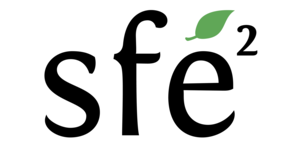In a context of global warming, many species are facing rapid changing of their habitat, which sometimes become unsuitable them. Rapid changes of environmental conditions can lead to local population decline, due to the decrease in individuals’ fitness. Different methods have been proposed to counteract fitness loss and ultimately hamper populations’ decline. Among them, assisted gene flow (AGF) consists in translocate individuals from another population to restore the local population’s numbers and adaptive potential by increasing genetic diversity.
After the drastic decrease of the population size of Arenaria grandiflora’s population in the Parisian region (Fontainebleau Forest) in the late 20st century, a translocation program was started in 1999 to avoid local extinction. A same mix of plants composed of individuals from Fontainebleau and from another natural population from Chinon (a site distant more than 200km from Fontainebleau) was used to create four new populations (four replicates) in two sites of the forest, with no possibility to exchange migrants. To evaluate the outcome of the program, yearly monitoring of plant’s fitness was performed by counting the number of flowers produced and the size of the plants. Furthermore, microsatellite markers were used to retrieve the ancestry coefficient in each individual, i.e., determining the proportion of the genome inherited from the two parental populations. Interestingly, difference in fitness were observed between individuals according to their ancestry. In order to study this pattern in more details and acquire a better understanding of the complex genetic processes conditioning the success of programs based on assisted gene flow, we first assembled a nuclear genome using a combination of Hifi and Hi-C approaches and then resequenced the whole genomes from 103 individuals sampled from 1999 to nowadays.
RESEARCH PROPOSAL/OBJECTIVES:
Preliminary analyses based on only 9 microsatellites loci highlighted an increase through time of the Chinon ancestry in the four reintroduced populations. In this internship, we want to better investigate the dynamics of the reintroduction exploiting whole genome sequencing data. To this end, we have three main objectives:
– 1) in a first instance, we will investigate whether the pattern of ancestry distribution is homogeneous along the genome
– 2) we will then investigate if the increase in Chinon ancestry is due to random genetic drift or it is driven by selection. More specifically, how does neutrality (random drift), positive selection, heterosis / inbreeding depression as well as various reproduction regime going from random mating to pure self-fertilization, contribute to determine the observed pattern of genetic variation?
– 3) Results from 1) & 2) will drive further sets of simulations aiming at providing hints on the level of genetic diversity needed for a successful translocation program as well as to predict the evolution of the Fontainebleau populations in the next future.
DESCRIPTION OF DATA if applicable (Data must be available before the start of the internship):
– Newly assembled reference genome (last manual curation step is ongoing)
– Whole genome sequences of 103 individuals including modern samples for the two reintroduction sites, the natural population of Chinon, and historical samples (founders + reintroduced populations in 2007)
– Survival and fitness data since the beginning of the reintroduction program on the four replicates (1999)
METHODOLOGIES:
To answer our questions, we plan to perform the following analyses:
– 1) whole genome scan to investigate local variation in ancestry proportion will be performed using clustering analyses (sNMF, PCA) and species vs gene trees analyses (using the TWISST package).
– 2) We will perform Individual-based forward in time simulations using SLiM (Messer et al. 2013, Haller et al. 2019), a flexible language that allows to build its own demographic model including drift, selection and species-specific reproduction regime. Forward in time simulations coupled with approximate bayesian computation approaches will be used to compare a battery of scenarios and to estimate the most likely demographic and selective parameters. 3) SLIM will be finally used to predict the evolutionary trajectory of genetic diversity given the most likely scenario in the next generations. Moreover, once the best scenario correctly built, it would be possible to vary the characteristics of the Chinon parental population to understand which level of genetic diversity would have been the most convenient to maximize the success of the reintroduction program.
REFERENCES (max. 5):
• Maurice, A. C., Abdelkrim, J., Cisel, M., Zavodna, M., Bardin, P., Matamoro, A., … & Machon, N. (2013). Mixing plants from different origins to restore a declining population: ecological outcomes and local perceptions 10 years later. Plos one, 8(1), e50934.
• Seaborn, T., Andrews, K. R., Applestein, C. V., Breech, T. M., Garrett, M. J., Zaiats, A., & Caughlin, T. T. (2021). Integrating genomics in population models to forecast translocation success. Restoration Ecology, 29(4), e13395.
• Van Rossum, F., Hardy, O. J., Le Pajolec, S., & Raspé, O. (2020). Genetic monitoring of translocated plant populations in practice. Molecular Ecology, 29(21), 4040-4058.
• Weeks, A. R., Sgro, C. M., Young, A. G., Frankham, R., Mitchell, N. J., Miller, K. A., … & Hoffmann, A. A. (2011). Assessing the benefits and risks of translocations in changing environments: a genetic perspective. Evolutionary Applications, 4(6), 709-725.
• Zavodna, M., Abdelkrim, J., Pellissier, V., & Machon, N. (2015). A long-term genetic study reveals complex population dynamics of multiple-source plant reintroductions. Biological Conservation, 192, 1-9.
Le contenu de cette offre est la responsabilité de ses auteurs. Pour toute question relative à cette offre en particulier (date, lieu, mode de candidature, etc.), merci de les contacter directement. Un email de contact est disponible: stefano.mona@mnhn.fr
Pour toute autre question, vous pouvez contacter sfecodiff@sfecologie.org.

Commentaires récents